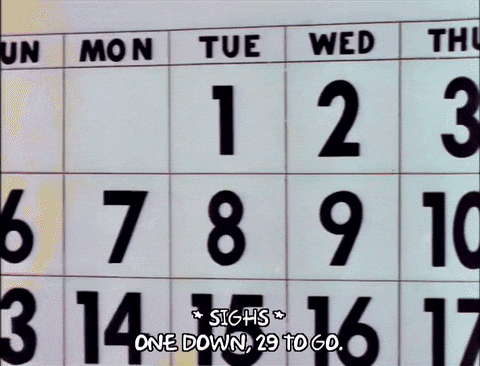Gutter Thoughts 030: How To Stay Creative With a Stressful 9 to 5
Practical strategies to protect your art, energy, and momentum when your day job drains you.
The Stoic Quote of the Week
“The art of living is more like wrestling than dancing, because an artful life requires being prepared to meet and withstand sudden and unexpected attacks.”
—Marcus Aurelius, Meditations, 7.61
Hey there!
The other day I was with two of my best friends. One of them said he hated his corporate job because it drained all his creativity.
I knew that feeling. My first two years in corporate left me the same way—empty. But I learned how to fight back. I blocked time, built habits, and slowly reclaimed my energy. The result? I self-published my first indie book for just $300. That book brought in $1,600—a 433% return. More important, I found fulfillment, my passion for storytelling, a community of readers, and a way to give back.
If your 9 to 5 leaves you drained, this is for you. Here are five ways that helped me stay creative while working full-time—and how they can help you finish your own projects.
Let’s dive in.

1. Block one hour a day for creativity.
Progress only happens when you
protect time for it. Block at least one hour a day—before work, after work, or even on lunch.
If one hour feels impossible, start with 30 minutes. Less than that, and you need to ask yourself if you’re serious about your creative goals.
Think of it as meeting the muse. Every time you show up, you strengthen the connection. Over time, those hours stack into finished pages, drawings, or songs.
If you struggle to even sit down, Steven Pressfield’s The War of Art is essential. He calls out “resistance”—the invisible force that keeps you from your work. His cure is simple: start.
If you’re not sure when to create, Daniel H. Pink’s When explains why certain times of day give you more focus. Use that insight to match your creative time with your natural rhythm.
Start small. Stay consistent. One hour is enough.
2. Start with a small project.
When you sit down, don’t show up empty-handed. Come with a purpose.
I often begin with 15–30 minutes of free writing. Sometimes it’s fleshing out a project, other times it’s just scribbling feelings. By the end, I usually know what to work on next.
But here’s the key: keep it small.
Write a short story, not a novel.
Sketch a character, not a full arc.
Record a one-minute video, not a feature film.
Small projects build momentum. Finishing builds confidence. Confidence makes the next project bigger.
3. Set a deadline you can hit.
Once you’ve picked a project, give it a deadline. Urgency creates focus.
But don’t set yourself up to fail. Two weeks is too short unless the project is tiny. A month is the minimum. Three months is the sweet spot.
Brian P. Moran and Michael Lennington put it best in The 12 Week Year:
“We mistakenly believe that there is a lot of time left in the year, and we act accordingly. We lack a sense of urgency, not realizing that every week is important, every day is important, every moment is important.”
That’s why 12 weeks works. It’s short enough to feel urgent, long enough to finish.
Pick a deadline. Circle it. Work backward.
4. Turn your 9 to 5 into fuel.
You spend 40+ hours a week at your job. Use it.
Keep a notes folder on your phone. Jot down:
A phrase from a meeting.
A new skill you picked up.
A conversation that shifted your view.
A frustration that sparked an idea.
Spend 15 minutes of your creative time reviewing those notes. Patterns will emerge. Inspiration will show up.
When I worked corporate, I noticed something unexpected: lessons flowed both ways. My creativity bled into work. I took more initiative, enjoyed my tasks more, and found new ways to stand out.
Stop seeing your job as a drain. Start seeing it as a toolbox.
5. Spend time in solitude to recharge your spirit.
Creativity demands energy. If your day job drains you, solitude restores you.
When I worked at Apple, I’d take walks—sometimes with coworkers around a reservoir, sometimes solo with music in my ears. Other days, I’d drop into the local comic shop. Every time, I came back with fresh ideas or solutions to problems that felt stuck.
Julia Cameron, author of The Artist’s Way, calls these “Artist Dates.” She defines them as:
“A block of time, perhaps two hours weekly, especially set aside and committed to nurturing your creative consciousness, your inner artist.”
Every creative should take these dates. They’re not indulgence. They’re maintenance. The more you recharge, the more consistent your creativity becomes.
Closing thought
Balancing a demanding job with a creative life isn’t easy. But it is possible.
Protect an hour each day.
Start with small projects.
Set deadlines you can hit.
Use your job as fuel.
Take solitude seriously.
Your creativity doesn’t have to die in a soul-less office. With consistency, it can thrive—and maybe even transform the way you see work itself..
Looking for more of my work? Start with Boom Kid—a story about power, identity, and loyalty.
This Week’s Creative Sparks
Here are the shows, books, movies, comics, and more that have sparked my creativity this week. And this week I am heavily influenced by all the video games updates that dropped. When done well Video games is a great source for great storytelling.
Video Game Spark: The Seven Deadly Sins Origin
I’ve always been a fan of The Seven Deadly Sins manga and the first two seasons of the anime. When the trailer for the new game dropped, I kept my expectations low. Most anime games end up as simple battle fighters. But this one surprised me—it looks like a full open-world RPG set in that world. For the first time in years, a game has me thinking about buying a PlayStation 5.
Show Spark: Wolverine Game Overview
Wolverine by Insomniac Games is one of the most anticipated releases yet. The official trailer just dropped—and it’s epic. But what struck me most wasn’t the footage. It was hearing the team explain what they aimed for: capturing Wolverine’s essence, choosing the right voice, and handling violence with care. I love when creators share the thinking behind their work.
Video Game Spark: Ananta Gameplay Video
When I first saw the Ananta trailer, it grabbed me right away. It was one of the first sparks I ever shared in Gutter Thoughts. Now, a year later, we finally have a full gameplay video—and it looks incredible. The 10-minute preview shows the depth of the world, the humor, the story, and the mechanics the team built. And here’s the kicker: it’s a free-to-play game.
That’s a wrap for this week’s Gutter Thoughts. Thanks for joining me on this creative journey—hopefully, something here sparked an idea or inspired your own work. Until next time, stay grounded, stay creative, and keep pushing forward.
This issue is sponsored by me.
I created Cut the Learning Curve, a free 5-day course for aspiring comic creators who are ready to stop guessing and start creating with confidence.
And if you’re more of a founder or creative team who wants this done for you, I also ghostwrite story-driven newsletters that build trust and drive conversion.



